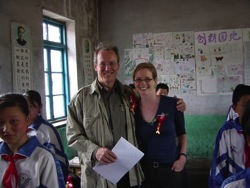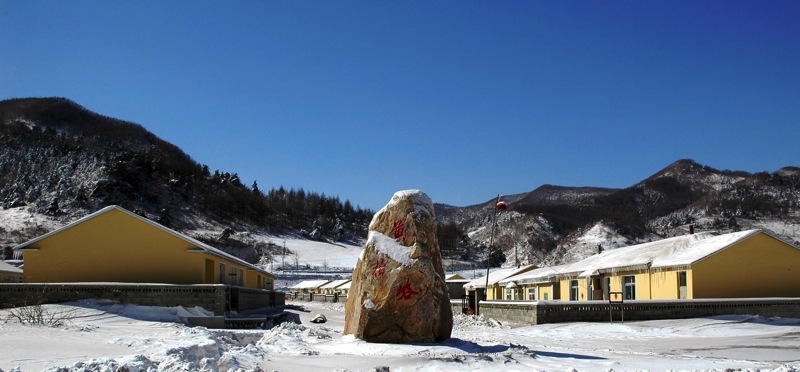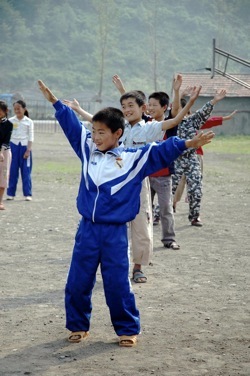
perspectives on a site
Huangbaiyu, like any thing, means different things to different people. Huangbaiyu is at the same time a trademark, a series of ravines in eastern Liaoning, a sustainable development project, a striated purple-aqua colored stone, a valley filled with yellow cypresses, the hope for a green urban future, a linguistic marker for a level of government administration, a lure to attract American investment, and a home. Read more...
the valleys and villages
Heading south from Benxi city on National Road 304, the structures of the city disintegrate--the road is ravaged by potholes. As National Road 304 stretches beyond the plains of Shenyang it begins to climb the rolling hills at the western edge of the Changbai mountain range, and enter Benxi. Continuing south, the road winds up the ever steeper foothills that rise from here eastward into Jinan, and North Korea. Read more...

the facts
The project to create what in 2005 has been called both “The World’s First Village” on the Benxi City-hosted website for Huangbaiyu, as well as “Asia’s First Village” by Liaoning Daily was initiated in a conference room at the Beijing Hotel in September 2002. Read more...
moments in time and perspective
Chinese-American Sustainable Development Dumplings
The Business of Leaders and Commoners

I arrived in Huangbaiyu the day of the “opening ceremonies” for the first house built in the project. It was May 21, 2005. I was to be the resident anthropologist, studying the effects of rapid, communal change in technology and spatial relationships as residents of the old valleys of Huangbaiyu were relocated into the new eco-town. Coming in on the bus from Shenyang with members of the Board of Councilors for the CUCSD, it suddenly hit me that I was about to see the place that I would be calling home for the next year and a half--for the first time. While I had thought a great deal about the context of my research on this project in relationship to the history of development, and had spent much of the previous 8 years either living in, or writing about, or studying China, I had no idea what this place would look like. Read more...

deciding to speak
In April, 2006 I could no longer continue reading the glowing stories of the successful development of a model eco-town in Huangbaiyu without becoming angry or depressed. When approached by reporters researching a story on the model development for BBC World Service, I said that I would talk to them if they’d leave Dai’s receiving hall, and come with me into the village--into the areas where the residents of these valleys lived, rather than in the office of the developer, or on the construction site. Read more...
article listings
Sacks, Danielle. “Green Guru Gone Wrong: William McDonough.” Fast Company. October 2008.
Lesle, Tim. “Western Promises.” Dwell. October 2008. (Not available online.)

a model construction site
the days of two weddings
three generations in a mud house
maize harvest
combing cashmere
primary school
rural labor
rural leisure
(albums will be added shortly)


Copyright © 2008-2009 Shannon May About me Design Blog Kenya & Life Sundries Blog Contact smay at post dot harvard dot edu
Everything is a work in progress


